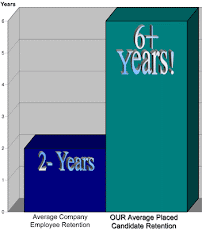Take stock of your staff with an eye to increase both your available cash and your profitability. Are some executives or team members not adding value to your company? It might be time to think about which of the weaker performers can be replaced by high performers.
“Divide employees into three categories,” says turnaround expert and Vistage speaker Edmond Freiermuth. “ ‘A’ performers are motivated, highly skilled and indispensable under all but the most draconian scenarios. ‘B’ performers are less experienced but up-and-comers able to handle new responsibilities. ‘C’ performers should only keep their jobs during periods of strong economic growth. The split among these employees is roughly 10 percent, 80 percent and 10 percent, respectively. The C performers are the ones who should be let go if your business experiences ongoing or escalating challenges.”
Be aware, though, that laying off decent workers can be a double-edged sword, warns DePaul University Finance Professor Bill Poppei. “The natural reaction of companies is to start eliminating personnel. They look for variable costs to eliminate, and human labor is usually the most expendable.”
Getting rid of good employees comes with its own costs. “When you fire people,” Poppei says, “all the money you put into their training goes out the window.”
Increase your “connect quotient” with your employees
Your employees may be as nervous or embroiled in a downturn as you are. That’s why you should consider hosting employee seminars on topics such as “The Care and Feeding of Your Credit,” “Preventing Home Loan Default and Foreclosure,” and “Negotiating the Foreclosure Process.” These programs will be of significant short-term or long-term value to your employees who may be facing great uncertainty.
Programs like these show the employees that the employers care about their lives, their families and their future. Employees who are acknowledged and feel cared about tend to return the sentiment in positive forms to their employer. “Offer a Credit Workshop for Your Employees”
Stay Connected: Offer a Credit Workshop for Your Employees
By Bill Evans, President, Institute of Professional TrainingToday, it is virtually impossible to complete the day without enduring the cacophony of credit crisis news. Whether in newsprint, Internet blogs or on TV, the breakdown of our lending system and the sub-prime/credit crisis occupies top billing. Many parts of the country are experiencing the highest home foreclosure rates ever seen. The fallout from the credit and housing crises will be felt across a broad spectrum of the U.S. population, not just those with low or mediocre credit scores. That spectrum includes your employees.
You can create an opportunity out of the crisis by hosting an in-house, informal educational program entitled “The Care and Feeding of Your Credit.” Taking a proactive approach to your employees’ well being and awareness should have a positive impact for everyone involved.
Basics of the Program
This session can be covered in less than 60 minutes as an informational effort to educate your employees on the ins and outs of credit. The more they know about how their credit standing impacts future borrowing efforts, the better position they will be in when the need arises. By developing such a program, you indicate your concern and connectedness to them as important human beings. They win and you win.
The program should be made available to all employees, not just those who may have credit difficulties; encourage broad participation. The announcement of the meeting should be worded carefully so that it does not appear to be a program for people with bad credit, as some employees with a fear of being stigmatized may not attend. Plan for the core content to be no more than 60 minutes, and allow some extra time for questions and answers. Consider inviting a guest from a credit reporting agency to deliver part of the presentation, while a member of your management team hosts the talks. Here is a sample outline of the points you might cover:
Agenda for “The Care and Feeding of Your Credit”
What is a FICO score?
a) How is it created?
b) What is measured?
c) What is a good score and a bad score?
Factors that affect your score
a) Payment history 35%
b) Outstanding debt 30%
c) Length of credit history 15%
d) Recent inquiries on your report 10%
e) Types of credit in use 10%
Ways you damage your credit score
a) Late payments
b) Close to or over credit limit
c) Short or no credit history
d) Home loan default or foreclosure
Ways to increase your credit score
a) Pay your bills on time
b) Don’t carry credit card balances, or keep them low
c) Don’t open new credit cards that you don’t need
d) Closing an account does not erase its history
Fixing damaged credit
a) Writing the credit agency
b) Writing the creditor
c) Waiting (negative information lasts seven years on your report)
How to obtain and read your report
a) How to order your report
b) How to read it
Employee Assistance Plan (EAP) or other resources for those who fall into financial trouble
a) Explain company resources available
b) Explain their cost, if any
c) Explain how to access them
At the start of the program, distribute a one-page outline that allows the participants to easily follow what is being discussed. Include the telephone number or Web site of your Employee Assistance Program (if you have one) or the contact information of someone who can help employees facing credit or foreclosure issues. Additionally you can list these resources:
1) Federal Trade Commission’s credit repair information http://www.ftc.gov/bcp/conline/pubs/credit/repair.shtm2) A Web site that offers free credit reports (one from each of the three major reporting companies per person per year) www.annualcreditreport.com
3) A sample dispute letter to credit agencies (included at the end of this article)
The Benefits
Holding a credit management program like this sends a meaningful message to your employees that your company cares about their lives, their families and their future. That intention is a powerful endorsement of your concern as a CEO or manager. The success of your employees, both personally and professionally, should happen by design and not by accident.
Bill Evans is the founder of the Institute of Professional Training. He can be reached at www.billevanspresents.com and bill@billevanspresents.com.
See more articles in the special series Managing in an Uncertain EconomySample dispute letter and credit agency addresses:
Date
Your Name
Your Address
Your City, State, Zip Code
Complaint Department
Name of Company
Address
City, State, Zip Code
Dear Sir or Madam:
I am writing to dispute the following information in my file. The items I dispute also are encircled on the attached copy of the report I received.
This item (identify item(s) disputed by name of source, such as creditors or tax court, and identify type of item, such as credit account, judgment, etc.) is (inaccurate or incomplete) because (describe what is inaccurate or incomplete and why). I am requesting that the item be deleted (or request another specific change) to correct the information.
Enclosed are copies of (use this sentence if applicable and describe any enclosed documentation, such as payment records, court documents) supporting my position. Please investigate this (these) matter(s) and (delete or correct) the disputed item(s) as soon as possible.
Sincerely,
Your name
Enclosures: (List what you are enclosing)
Credit agency addresses
Equifax
P.O. Box 740241
Atlanta, GA 30374
800-685-1111
www.equifax.com
TransUnion LLC
P.O. Box 2000
Chester, PA 19022
800-888-4213
www.transunion.com
Experian
P.O. Box 2104
Allen, TX 75013
888-397-3742
www.experian.com
















No comments:
Post a Comment